Logging was not just a winter "sport". In summers, when snow was not available for easy "skidding" of the logs to sites where they could be loaded onto sleds, "Big Wheels" were utilized. Michigan's rough, wet forest terrain made logging a winter industry in its early years. Loggers used frozen ground and ice roads to skid the huge logs from the forests to river banks. In spring they slid the logs from those banking grounds into the rivers for the log drive to the sawmills. Silas C. Overpack made logging possible in all four seasons when he began manufacturing "big wheels" in his Manistee carriage shop. Big wheels could haul logs without the need for icy ground. Here's how it started:
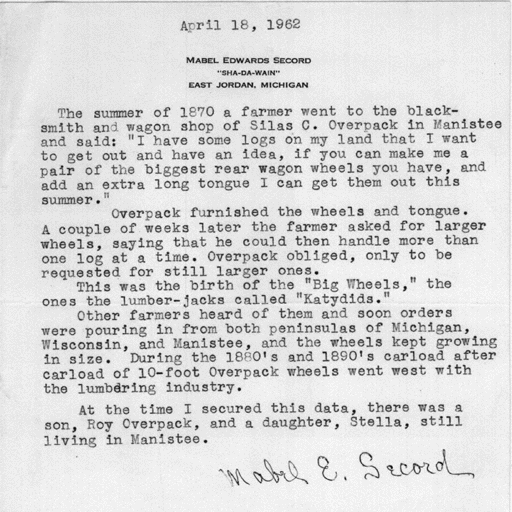
Source: Unknown
Overpack sold three sizes of big wheels: nine feet high, nine and
one-half feet high and ten feet high. Unlike a wagon that carries a load above its axle,
big wheels carried logs chained beneath the axle. Big wheels could carry logs from 12 to
100 feet in length and enough logs to total 1,000 to 2,000 board feet of lumber in a
single load. The axles were manufactured from hard maple, and the 16-foot tongues were
made of ironwood. To protect them from gouging by stumps or trees, the wheels had iron
rims, and rings of iron guarded the spokes. Genuine Overpack wheels were always painted
red.
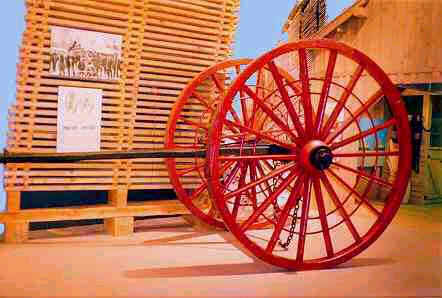
Source: Unknown
Overpack exhibited his big wheels at the Columbian Exposition in Chicago in 1893. He
shipped them via railroad to other states and foreign countries. The U.S. Army Forestry
Department took several pairs to France during World War I. In Michigan at least 65
different lumber companies used them. The big wheels were part of Michigan logging history
from 1875, when Overpack made his first set, until 1920.
Big wheels were also known as logging wheels, Michigan wheels and
bummer carts; one writer remembered that some loggers called them "katydids."
Visitors to the museum's gallery see a set of big wheels that is 10 feet high. Visitors
can also try pulling a smaller scale model of the big wheels. Big wheels can also be seen
at the Hartwick Pines Lumbering Museum near Grayling.
Two Michigan-initiated innovations of the 1870s were responsible for
the largest increases in Michigan's logging production in the late 1900's. The Big Wheels,
shown below and invented by Cyrus C. Overpack of Manistee, enabled cutting to
continue in the snowless seasons by providing an alternative to sled transportation.
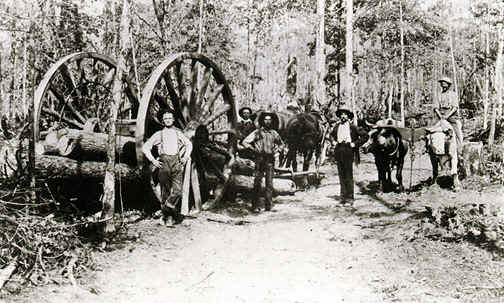
Source: Unknown
As its name implies, the Big Wheels consisted of a set of enormous wheels drawn by a team
of horses. Logs were chained beneath the axle, and once the inertia of the load had been
overcome, it was relatively easy to keep the wheels moving.
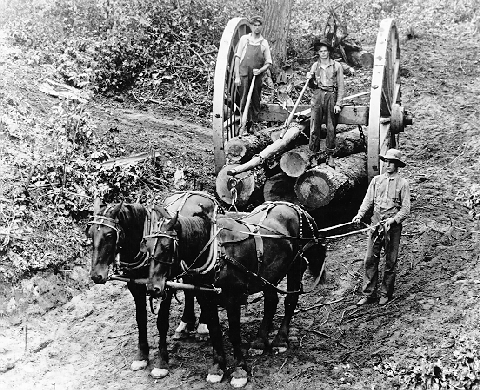
Source: Unknown
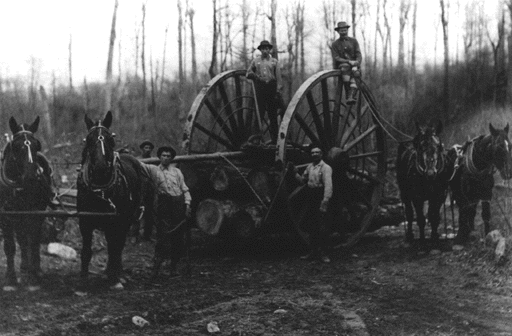
Source: Unknown
The Big Wheels, shown below and invented by Cyrus Overpack of Manistee, enabled cutting to
continue in the snowless seasons by providing an alternative to sled and river
transportation.
Big wheels could carry (actually, drag) logs up to 100 feet in length. The wheels
were 9-10 feet in diameter.
This material has been compiled for educational use only, and may not be reproduced without permission. One copy may be printed for personal use. Please contact Randall Schaetzl (soils@msu.edu) for more information or permissions.